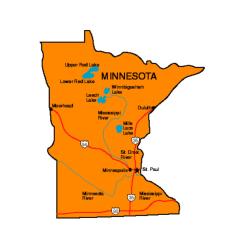BUILDING BLOCKS STATE CASE STUDY #3: Determining Critical Demographic Fields for Laboratory Result Interpretation and Follow-Up

Minnesota Department of Health
BACKGROUND
The Newborn Screening (NBS) Program at the Minnesota Department of Health (MDH) was in the beginning stages of its interoperability project with one of the largest health systems. During initial meetings with key IT staff from this external partner, questions arose regarding which demographic information from the newborn screening card the hospitals were currently capturing in the electronic medical record (EMR).
PROBLEM
The NBS learned that the hospitals were not capturing all fields in the EMR, and MDH staff and needed to make some decisions about how critical those missing fields were to laboratory result interpretations and/or short-term follow-up of abnormal results to the primary care provider. To make decisions about this, we set up meetings between the newborn screening operations supervisor, the laboratory supervisor, short-term follow-up supervisor, genetic counselors and senior laboratory staff. This resulted in a re-evaluation of the current demographic fields that were being collected on the screening card but omitted in the EMR, and their importance. It stretched the staff to think outside the box regarding what they needed to have versus what was nice to have.
SOLUTION
Program staff reached a consensus and decided that many of these fields were important to continue collecting, but a few were not necessary moving forward. We decided that there was not a need to collect antibiotics, risk factors or specific feeding-type fields. The laboratory stated the need for date and time of collection, transfusion status (Y/N answer) and TPN feeding (Y/N answer) for result interpretations. The follow-up team stated the need for primary care provider information for those instances of abnormal result notification. The operations team would require the card barcode for identification purposes. This led to the next step, which was to look at the best method for getting that information to the NBS program via electronic lab ordering.